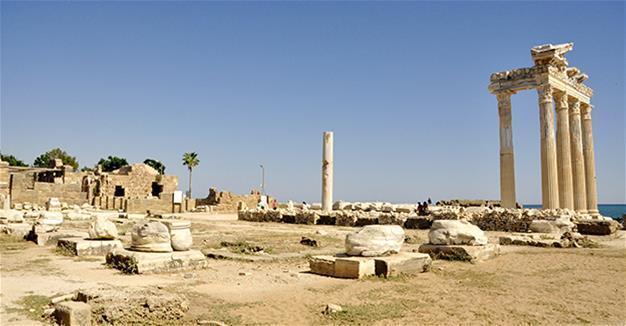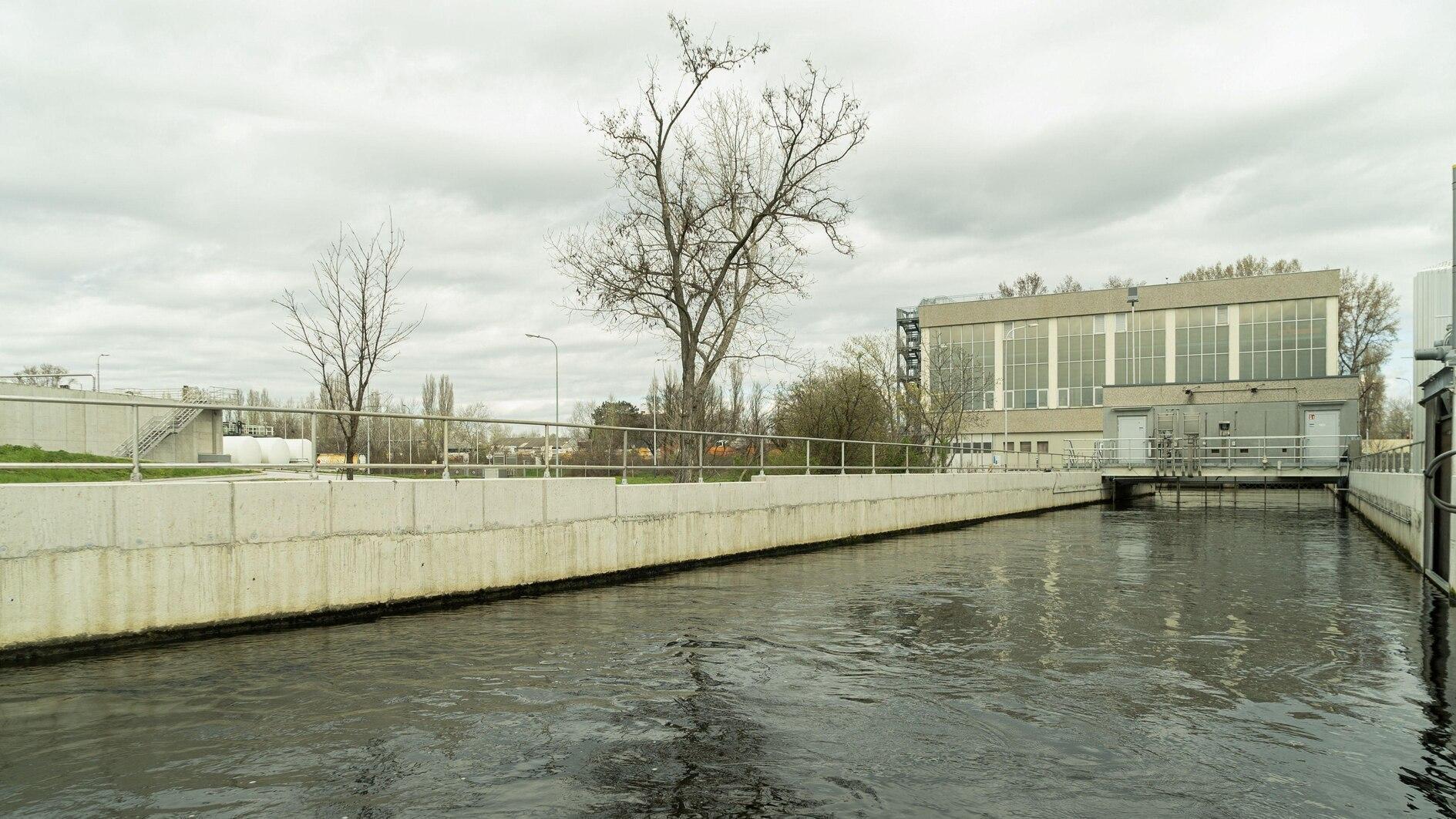Temple of Apollo restored in Antalya
ANTALYA – Doğan News Agency
 The Temple of Apollo, dating back to the 2nd century and the time of Roman Emperor Antoninus Pius, has been reinforced after its columns began to show signs of aging.
The Temple of Apollo, dating back to the 2nd century and the time of Roman Emperor Antoninus Pius, has been reinforced after its columns began to show signs of aging. The concrete bases carrying columns of the ancient Temple of Apollo, a symbol of Side in the southern province of Antalya’s Manavgat district, were worn down over time and irons inside the columns had started coming to the surface.
The bases were restored by Side Museum officials after a visit from Culture and Tourism Ministry Deputy Director Hüseyin Yayman in July.
The temple’s five columns and headings, which have remained standing next to each other over centuries, were restored between 1984 and 1990. But the irons placed inside some columns during this process started coming to surface due to the effect of weather conditions.
Yayman, who came to the district on July 18 for a meeting, visited the Temple of Apollo. During the visit, Manavgat District Governor Nazmi Günlü showed him the irons coming out of the broken columns, and said they have been waiting for 12 years to get permission from the company that restored the temple in 1984 to restore the columns once again.
Yayman examined the broken parts of the columns and said no permission was necessary because only the broken parts would be affected and the wider artifact would not be touched.
He then ordered officials to fix the columns in the Temple of Apollo but warned them to avoid a repetition of the much-criticized restoration of the bath marbles of Aspendos.
Following the order, the broken parts of the Temple of Apollo were restored with the same materials used in the restoration in the 1980s.
Controversial Aspendos restoration
The world famous ancient Aspendos Theater in Antalya was controversially restored a few years ago with white marble, which sparked outrage in Turkey.
Tourists and cultural associations lamented the renovation after smooth white marble stones were installed at the amphitheater, jarring with the 2,000-year-old rough grey stones that were already present.
The Culture Ministry stated that samples from the original stones at the amphitheater had been taken and that limestone with the color “Korkuteli beige” was used for the restoration because it was determined to possess the closest properties to the original stones.
It claimed that the stones used for the restoration would – over time and with the effect of the weather and natural conditions – form patina and adopt the same color as the original stones. It also said the original stones had acquired their current color and texture with environmental effects over 2,000 years.
















